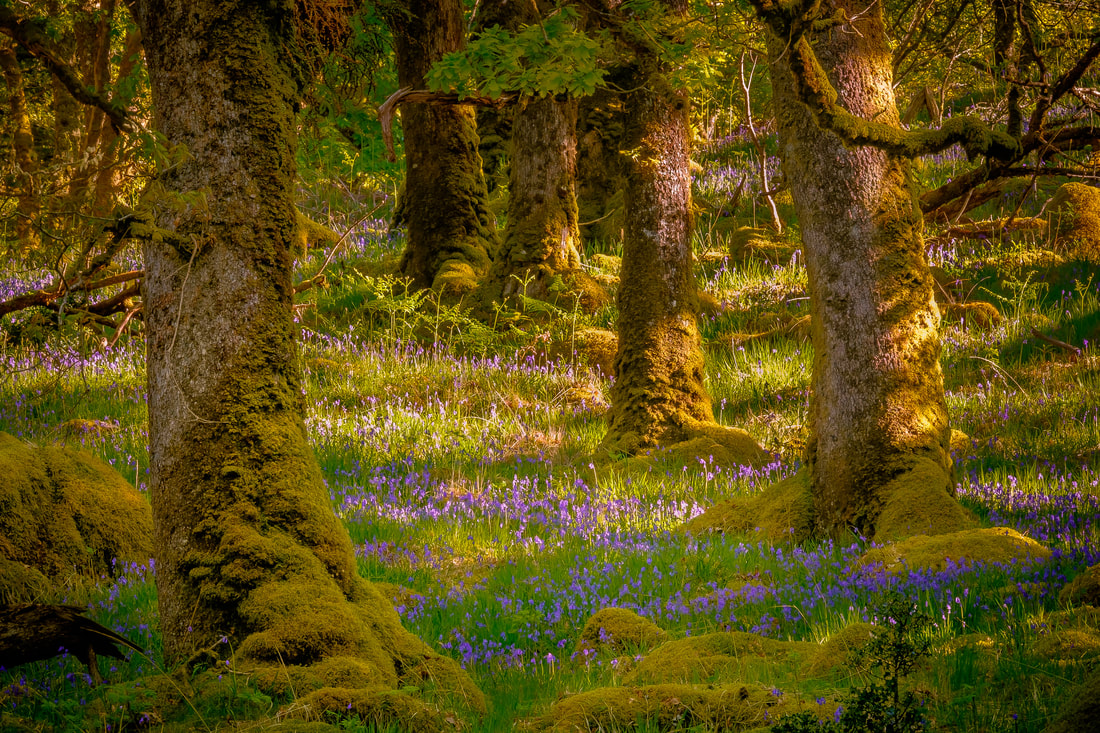|
We are now in May, the last month of Spring and the landscape has well and truly awakened from its winter slumber. The leaves have unfurled on the trees, the wildlife is thriving, and the colourful blooms have appeared. We’ve seen snowdrops in February, wood anemones in March, primroses in April and now it’s time for the carpets of bluebells to appear in the ancient woodlands across the Peninsula. This wildflower spectacle is a magical sight and one that leaves you with a feeling that these woodlands with carpets of blue are indeed enchanted. In Celtic folklore, bluebells have a strong association with spirits and faeries. They are often called faerie flowers and their small bell-shaped flowers are believed summon the faeries when rung. This is not necessarily a good thing because faeries are believed to hang their spells on the bluebells to dry and disturbing them may unleash wild magic upon you, leaving you dazed by enchantment and unable to find your way out of the woods. It can be even more serious for children who pick bluebells because it is believed that they could be snatched away by the faerie folk, never to be seen again.
So, if you do visit a bluebell wood, just remember to stay on the path and to not pick or disturb any of the flowers. Besides risking the wrath of the faeries, another good reason to avoid disturbing them is that they are poisonous, and this might be the reason why there are so many old tales and legends warning people away from them. However, these beautiful little flowers have also been valued for their useful properties and have been used over the centuries by herbalists to prevent nightmares and to treat leprosy, spider bites and tuberculosis. They contain at least 15 biologically active compounds that provide them with protection against insect and animal pests and in recent years, some of these compounds have been investigated as possible treatments for HIV infection and cancer. Bluebells have practical uses as well. They produce an exceptionally sticky sap which was used by our Bronze Age ancestors to make a glue that they use for attaching flights of feathers to their arrows. This glue has also been used for several centuries by bookbinders to make and repair books, while in Tudor times, starch was extracted from crushed bluebell roots and used to stiffen the ruff collars that were very much the fashion back then. Finally, some bluebell folklore gives a positive impression of this beautiful little flower. For example, some believe that by wearing a wreath made of the flowers, the wearer can be compelled to speak only truth while others believe that if you can turn one of the flowers inside out without tearing it, you will eventually win the one you love.
2 Comments
|
AuthorHi, Archives
March 2024
Categories
All
|


